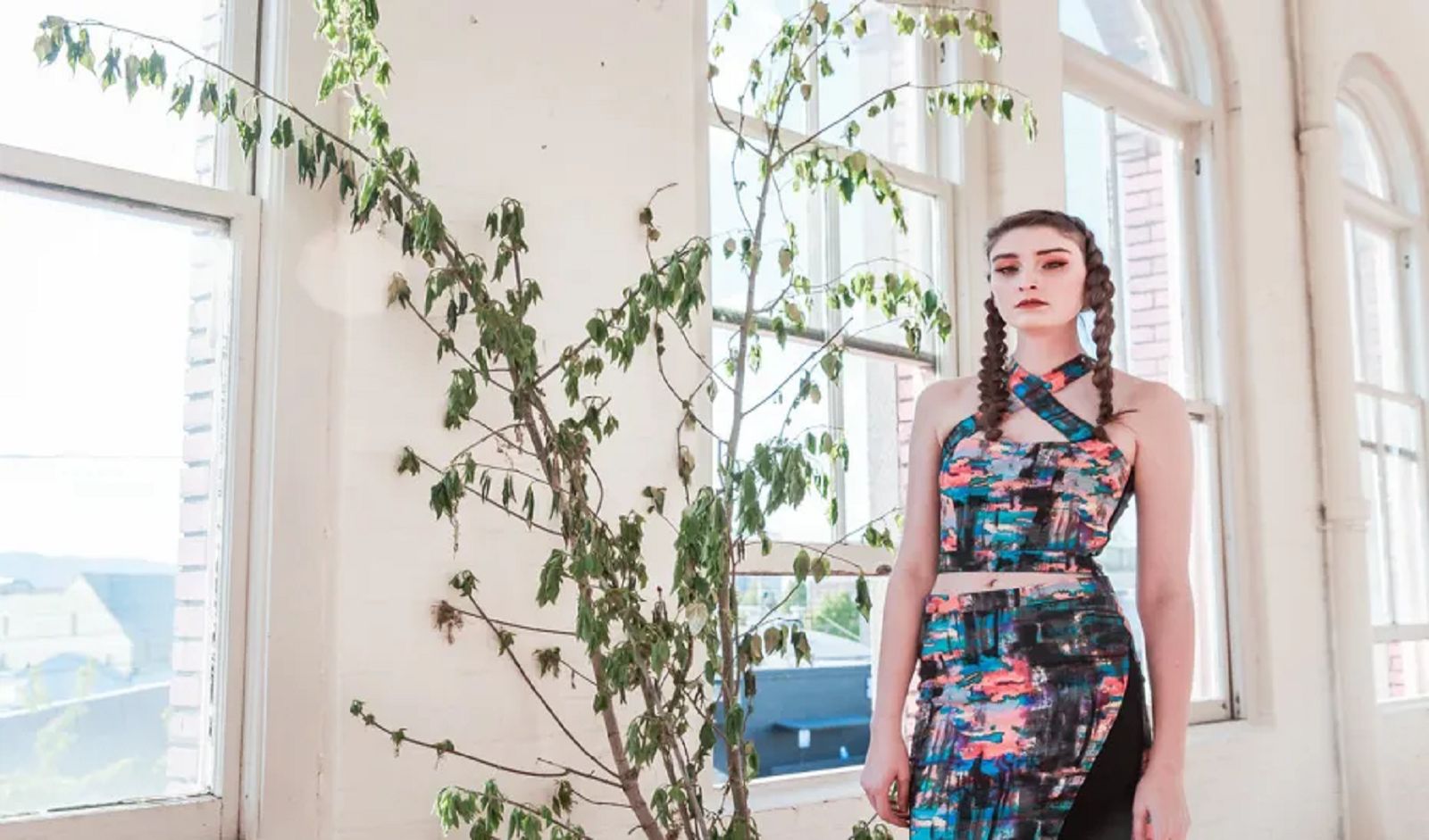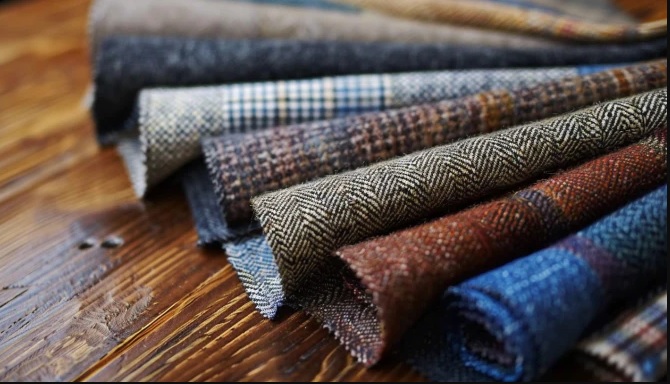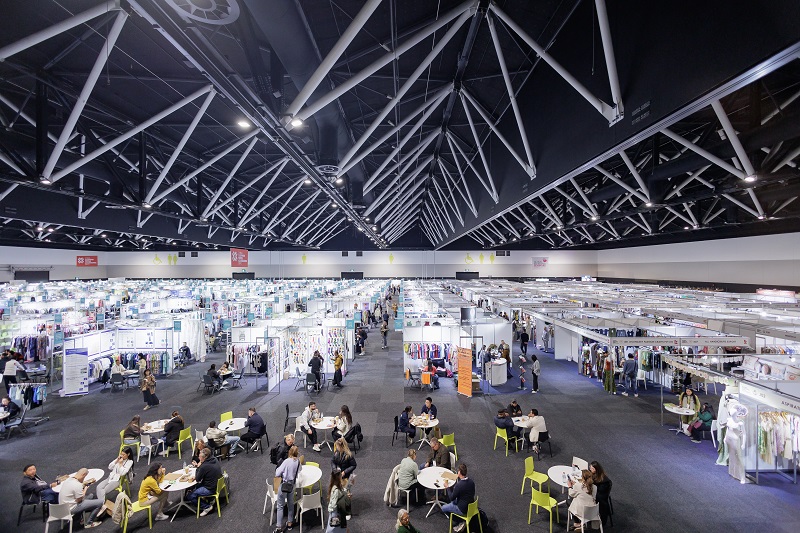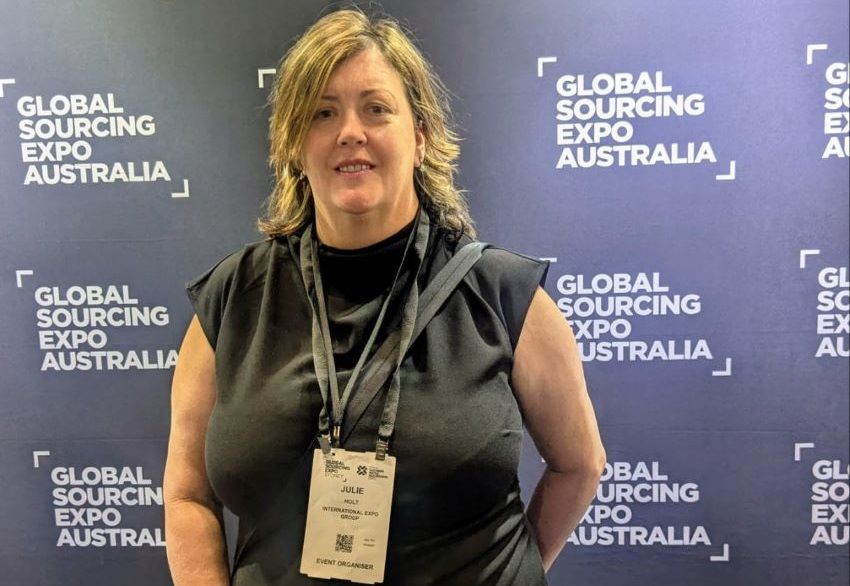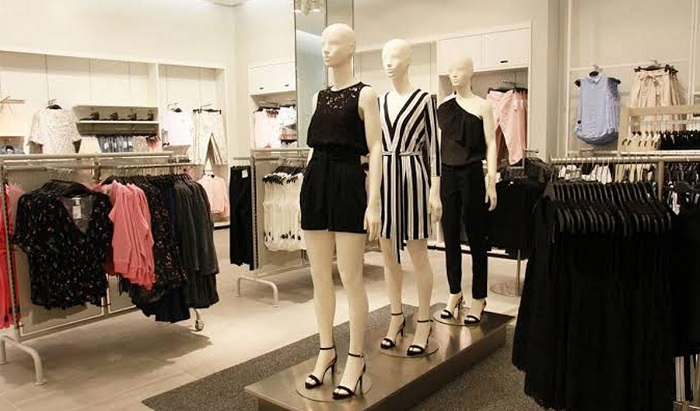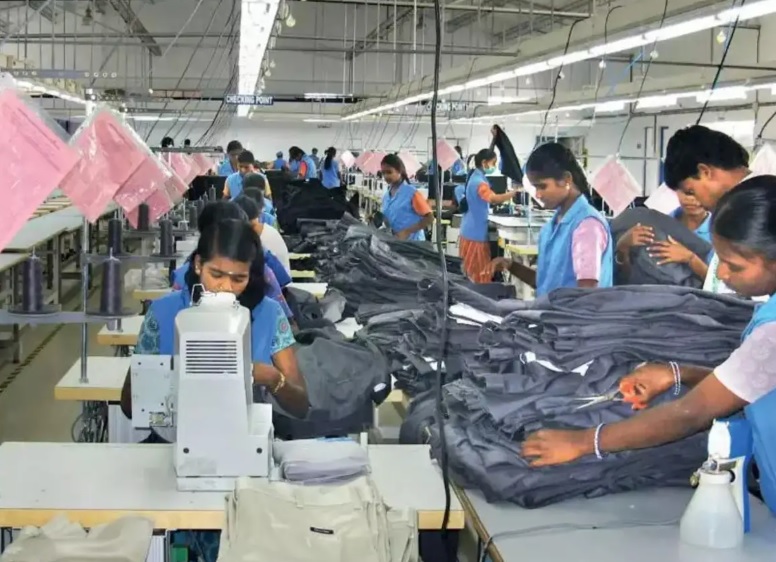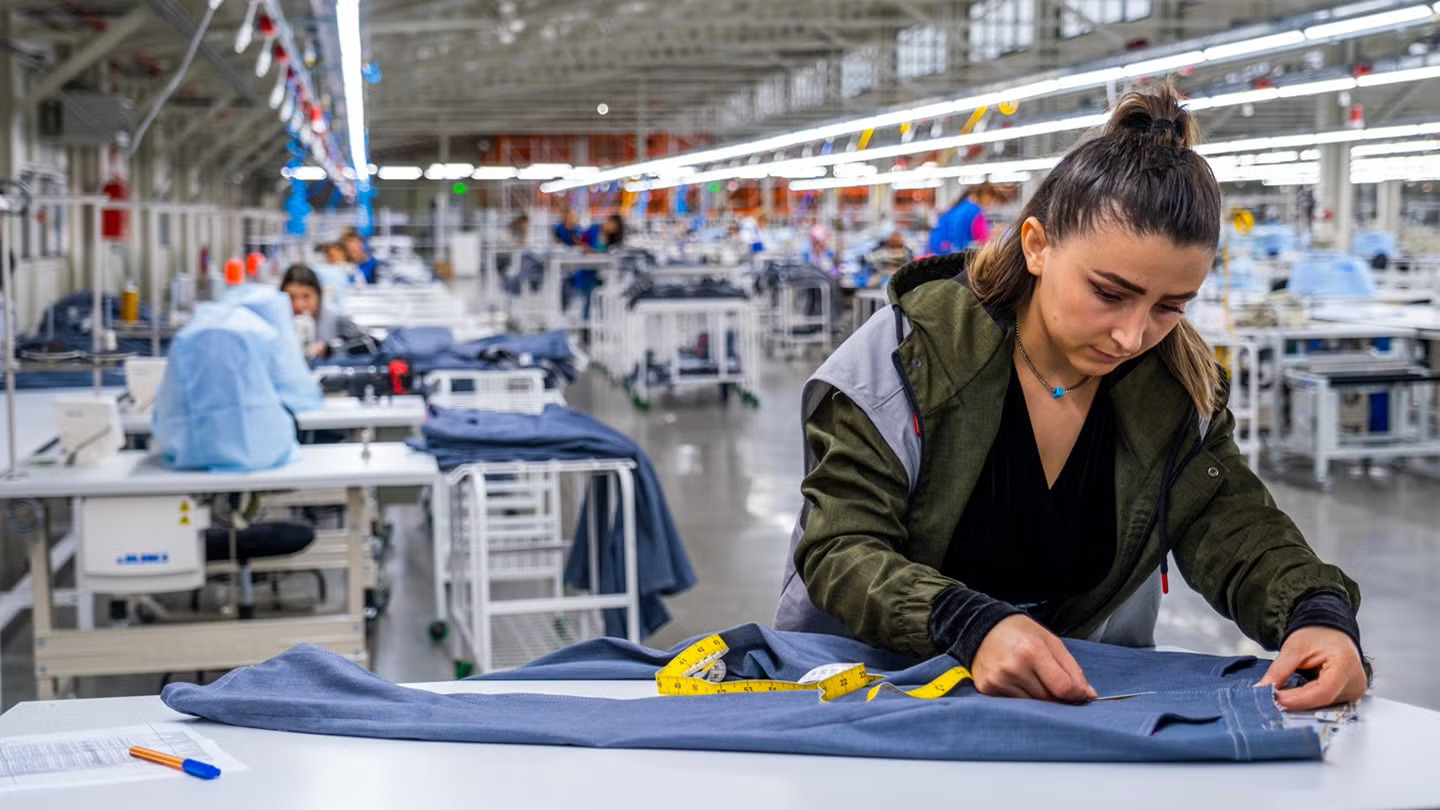FW
Hyosung has unveiled a new denim spandex brand Creora Fit. Hyosung is a South Korean elastane producer. Creora Fit is a spandex brand that gives denim 360 degree stretch both horizontally and vertically, unlike traditional denim with elastane that only stretches in a horizontal direction. When giving vertical elasticity with the traditional spandex, the fabric becomes warped. However, the Creora Fit technology has solved such problems.
As the bi-stretch denim with Creora Fit technology satisfies the consumer demand for a more comfortable wear and a perfect silhouette, it is expected to play a role in the rise of athleisure, one of the biggest trends in the fashion and retail worlds today.
Hyosung has partnered with Chonbang, South Korea’s denim product manufacturer, and Soorty of Pakistan, a leading global denim product manufacturer, to introduce the Creora Fit technology.
Hyosung will work with more brands to develop denims by using the Creora Fit technology and deliver consumer needs for more comfort and better fit at the same time. The company constantly looks for new ways to add value. Its innovation platforms are focused on improved processing value, enhanced functionality and new aesthetics.
www.creora.com/
Global expenditure on clothing and footwear is expected to decline by 1.5 per cent in 2015.
The decline will be due largely to depreciations of the currencies in a number of major supplying countries against the dollar. Such depreciations have made exports from these countries cheaper in dollar terms and this has enabled suppliers in these countries to remain competitive as sourcing locations.
In China, for instance, the value of the currency fell against the dollar by four per cent between October 2014 and October 2015 after a sustained appreciation between July 2005 and October 2014.
As a result buyers who source from China hope to be able to negotiate reduced prices. Chinese producers may also have to reduce their prices in order to remain competitive with their counterparts in Vietnam, given that Vietnam is set to gain from preferential access to the US market under the Trans-Pacific Partnership agreement.
In India, the rupee depreciated by 13 per cent against the dollar between 2012 and 2014. And during the first nine months of 2015, it was down by four per cent compared with the corresponding period a year earlier to its weakest level on record. The depreciation of the rupee has made Indian products cheaper in dollar terms and therefore more attractive to foreign buyers.
The Synthetic and Rayon Textiles Export Promotion Council (SRTEPC) has welcomed the Central Government’s efforts to boost exports of man-made fibres to B&C group countries under the MEIS Scheme. In the original policy issued in April 2015, there was no incentive for export of such textiles to African and Latin American countries falling under the B&C category.
Anil Rajvanshi, SRTEPC Chairman, said that India, being the largest producer of polyester and viscose in the world, can supply polyester/viscose blended spun (P/V) yarn to the world for making apparels. In the current year, the export of P/V spun yarn falling under Chapter 55 dropped by almost 19 per cent due to non-competitiveness as compared to China. There is a huge market for such yarn and the same needs to be included under MEIS for B&C countries, where India can definitely secure a large share of exports in this segment.
The government has announced the revised all industry duty drawback rates effective from November 23, 2015. The rates have been increased in some cases like cotton made-ups and readymade garments of cotton and certain fabrics. However, the rates for the same items manufactured from man-made fibres have not been increased. One of the most commonly exported fabrics made of P/V falling under Chapter Heading 5515 has got a setback as drawback rates on this has been reduced.
“SRTEPC requests the drawback directorate under MOF to kindly look into it and correct the anomaly in the made-ups and fabrics made of PV accordingly. Though, the drawback rates announced by the government are by and large satisfactory except for some of the above items, which have been reduced despite the increased competition from China,” Rajvanshi said.
He further said that it is heartening to note that the Cabinet has approved 3 per cent interest subvention for the exporters applicable from April 2015, which will give an impetus to the falling exports of the country and should be uniformly applied all exporters without any discrimination and conditionality’s.
www.srtepc.org
Belgium based Europlasma, a leader in low pressure plasma technology, has been awarded with the ITMA Future Materials Award 2015 for the Best Innovation in Sportswear and Outdoor Apparel with its PlasmaGuard technology. PlasmaGuard is Europlasma’s durable water repellent (DWR) coating solution for sportswear and outdoor apparel applied by low pressure plasma technology.
The PlasmaGuard solution is said to be disruptive to the DWR industry, combining the highest performance with the lowest environmental footprint, and is applicable on 3D textile goods and apparel, the company reports. Europlasma was nominated for both categories ‘Best Innovation Sportswear and Outdoor Apparel’ and ‘Most Innovative Medium Company’.
World Textile Information Network (WTiN), publisher of international technical textiles magazine Future Materials, launched the Future Materials Awards to recognise success in textile innovation and celebrate the essential work of the many businesses which support the industry. The industry leading awards recognise innovation and achievement right across the technical textiles industry, with 19 dedicated categories providing competition for all end-use sectors for technical textiles as well as materials experts, product developers and designers.
www.europlasma.be
The International Labour Organization (ILO) in collaboration with the Bangladesh Institute of Management (BIM) has launched capacity development training programme on effective workplace cooperation for workers’ representatives and mid-level managers in the ready-made garment (RMG) sector. By the end of 2015, the training will be imparted to at least 2,700 workers and managers from 100 RMG factories.
The training will be implemented in technical collaboration with BIM and in partnership with the Bangladesh Garment Manufacturers and Exporters Association (BGMEA), the Bangladesh Knitwear Manufacturers and Exporters Association (BKMEA), National Coordination Committee for Workers’ Education (NCCWE) and IndustriALL Bangladesh Council (IBC).
The capacity building activities will ensure that workers, employers and their representatives are better equipped to engage in meaningful dialogue and labour relations on workplace issues of mutual importance. The programme will see a series of two-day workshops take place each bringing together equal number of workers’ representatives and managers.
28 master trainers including seven management counsellors from BIM, who have been trained on effective workplace cooperation by ILO’s International Training Centre (ITC) will conduct the training programme. Five training modules developed by ITC and translated into Bangla will be used to support the sessions.
www.ilo.org
Kitex Garments a vertically integrated manufacturer of infant wear has the ability to manufacture over five lakh pieces of infant wear per day. For 2014-15, the company’s turnover was up by 15 per cent and PAT was 72 per cent higher compared to the previous year. Kitex invested Rs 30 crores in the last financial year for augmenting production lines, modernisation of process plant and mechanisation of production line to the extent possible. These have contributed a lot to the profitability of the company.
Kitex intends to further its performance through backward integration of operations into the spinning segment and also by takeover and merger of similar product companies. The goal is to increase capacity utilisation from 65 per cent in 2014-15 to 75 per cent by 2015-16. The plan is to develop a new private label by spring 2016 and its own label by this year end. By opening a new office, the company plans to change over from FOB to LDP terms which will be more attractive to buyers. It will also aim for additional profits. The US remains Kitex’s key market. Going forward, it plans to further leverage its competitive advantage in the US.
www.kitexgarments.com/

New innovations attract attention
A brand new card was showcased by India based Lakshmi Card Clothing. S Harishankar, Joint Managing Director says, the new card clothing wire is highly durable, long lasting and improves the quality of yarns and is made using better technology and superior metallurgy and is produced on state-of-the-art machines.
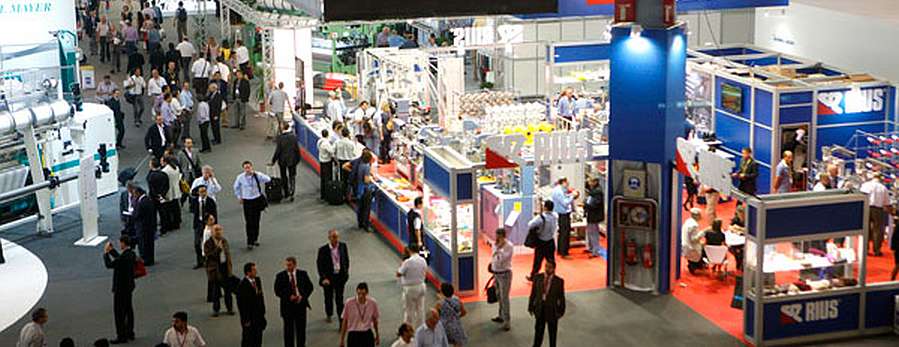
A new hydro-carbon apron for texturising applications made from special polymers, which offers longer life and better performance even in extreme conditions is being displayed by Mangal Singh Bros from Navi Mumbai. The product is already being marketed in China and Taiwan.
New Delhi-based Lohia Corp’s winders for carpet backing yarns and a rope winder used after the extrusion process. Anil Bagga, Vice-President, Business Development, said that the company was looking at the huge replacement market in Europe and most of the winders with companies were very old, which, he stated, translates into substantial potential for the company’s winders in the European market.
Fourth time participants Pune’s Aksons Engineers manufacturers of polymer cleaning equipment and testing and auxiliary equipment such as yarn splicers and yarn tension meters was also there. The company exports to around 25 countries including the US, Brazil, Peru, Thailand, Japan, Germany, Belgium, Indonesia, etc.
Jalandhar’s Zeon Belts exhibited Rough Top Belts, along with other products like conventional belts. This second time participant exports to around 29 countries like Russia, Malaysia, Egypt, Iran, Brazil, etc. Nearly 70 percent of its production is exported, and the rest is sold in the Indian market.
Fourth time participant, Coimbatore-based Ringman redeveloped its range of rings by adding a superior coating, which helps spinners achieve lesser hairiness and higher efficiency due to lesser breaks, and higher productivity.
Gujarat manufactures make a mark
Surat made a mark at ITMA, with Indiana Technical Ceramics, which makes ceramic guides. They were participating for the third time. The company introduced guides made from Alumina 99.5 percent purity and also from Zirconia at the event. Ahmedabad-based Jivanlal & Sons showcasing for the first time exhibited consumable spare parts of Schlaforst Autocoro 5, a new model from Schlaforst and several spare parts across the spinning, weaving and winding areas.
With such a huge presence, Indian textile machine manufacturers are set to make a mark globally.
Representatives from garment factories and labour inspectors have begun a collaboration programme designed to improve communication, foster knowledge of labour laws and solve industry problems.
The programme is part of an ILO project, ‘Compliance through Inspection and Dialogue’, which aims to improve working conditions, productivity and competitiveness in the Lao PDR garment manufacturing sector by strengthening the national labour inspection system, protecting workers’ rights and improving the garment industry’s competitiveness in global supply chains.
Labour Inspectors from the Ministry of Labour and Social Welfare (MOLSW) will work with factories utilising innovative tools to improve communication mechanisms between workers and employers. Labour Inspectors can provide training on labour law rights and obligations and assist factories to identify risks and problem solve.
Representatives from 12 factories that have volunteered to take part in the project attended a workshop on November 4, 2015 in Vientiane to begin their collaboration with the labour inspectorate. The garment sector is Lao PDR’s largest manufacturing employer and makes a significant contribution to annual national exports. Around 30,000 workers are employed by about 60 exporting factories and 45 subcontracting firms, with production mainly in and around the capital, Vientiane.
www.ilo.org
Due to massive invasion of pink bollworm pest and sukaro (para wilt) disease, cotton production in Gujarat, which is also the largest producer of this staple fibre in India, may drop by 30 percent.
Agriculture experts and farmers far that the production may fall to a five year low to less than 90 lakh bales—down from 125 lakh bales in 2014-15. The lower production threatens to hit the textile trade apart from the farmers.
Thousands of cotton growers in Saurashtra and north and central Gujarat have been forced to destroy their standing crop, rendered useless due to infection, which is unprecedented in magnitude. In fact, after the pest attack destroyed his cotton grown on 85 bigha land, a 30-year-old farmer from Supedi village near Rajkot, committed suicide, being the first victim of the crisis.
N M Sharma, Managing Director, Gujarat State Co-operative Cotton Federation Ltd (Gujcot) beleives that cotton production will be 30 percent less this year. The area under sowing in 2015-16 was already down at around 27 lakh hectares as against 30 lakh hectares the previous year as farmers switched to other cash crops like groundnut, he added. Sharma further stated that the production may not cross 90 lakh bales, which is the lowest in five years.
Dilip Patel, President, All Gujarat Ginners Association said that the yarn market was reeling under slowdown and mills were already facing problems due to subdued textile market. Dr K L Raghvani, Head of Entomology department at Junagadh Agricultural University said that the pest can be controlled only if it's detected early and once it enters the cotton balls, pesticides are not effective.
Stating that they were confident of achieving further growth in the garment sector, textile industry Associations in Coimbatore hailed the revision of duty drawback rates and values caps by the Centre recently. Prabhu Damodaran, Secretary, Indian Texpreneurs Federation (ITF), welcomed the move and said that the industry was confident of achieving further growth in the garment sector with the timely support. He added that the importance to man-made fibre-based (MMF) yarn and fabrics would be a morale booster to the industry to focus more on MMF based value-added products, and this would in turn raise competitiveness in the global apparel market.
P Nataraj, Deputy Chairman, Southern India Mills' Association (SIMA) thanked the government for this move and particularly Nirmala Sitharaman, Minister of State for Commerce and Industry, and Saumitra Chaudhri, Chairman of Duty Drawback Committee, for enhancing drawback rates and value caps for various value-added products such as yarn counts in 100s and above, fabrics with less than 200 grams per square metre, knitted and woven garments.
He said the textile industry would be encouraged to focus more on value addition, which would generate more forex, due to the attractive rates given for certain value-added products. Nataraj feels the revised rate, which also encourages the industry to follow the Cenvat route to prepare for forthcoming GST, would get enhanced rate and value when exports opt for Cenvat facility.

